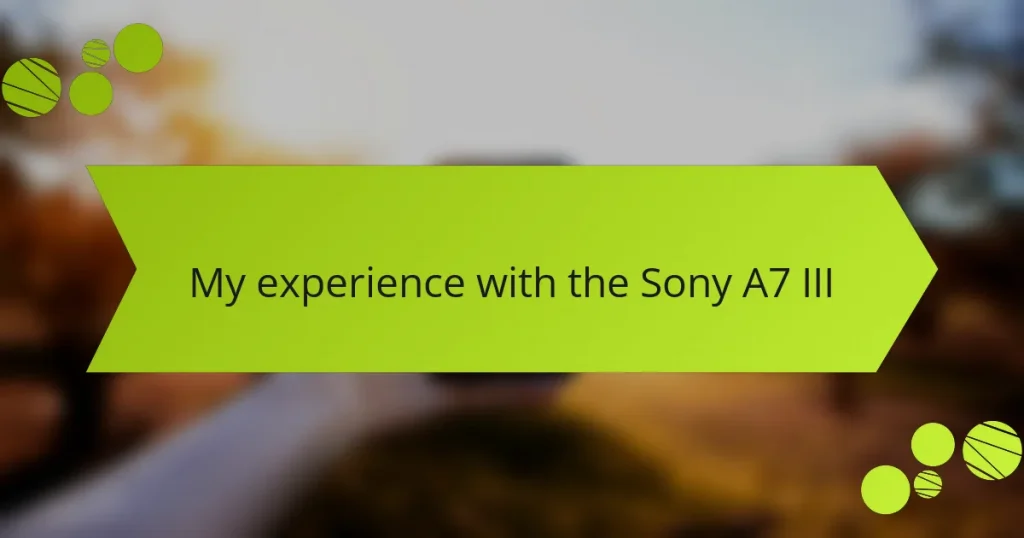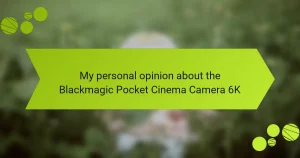Key takeaways
- Sony A7 III features a 24.2 MP full-frame sensor with excellent low-light performance and dynamic range.
- The camera’s 693 phase-detection autofocus points offer fast and accurate focusing, ideal for capturing action shots.
- Dual SD card slots enhance storage flexibility and provide backup options during important shoots.
- Despite some drawbacks like battery life and a complex menu system, the camera is praised for its ergonomic design and image quality.
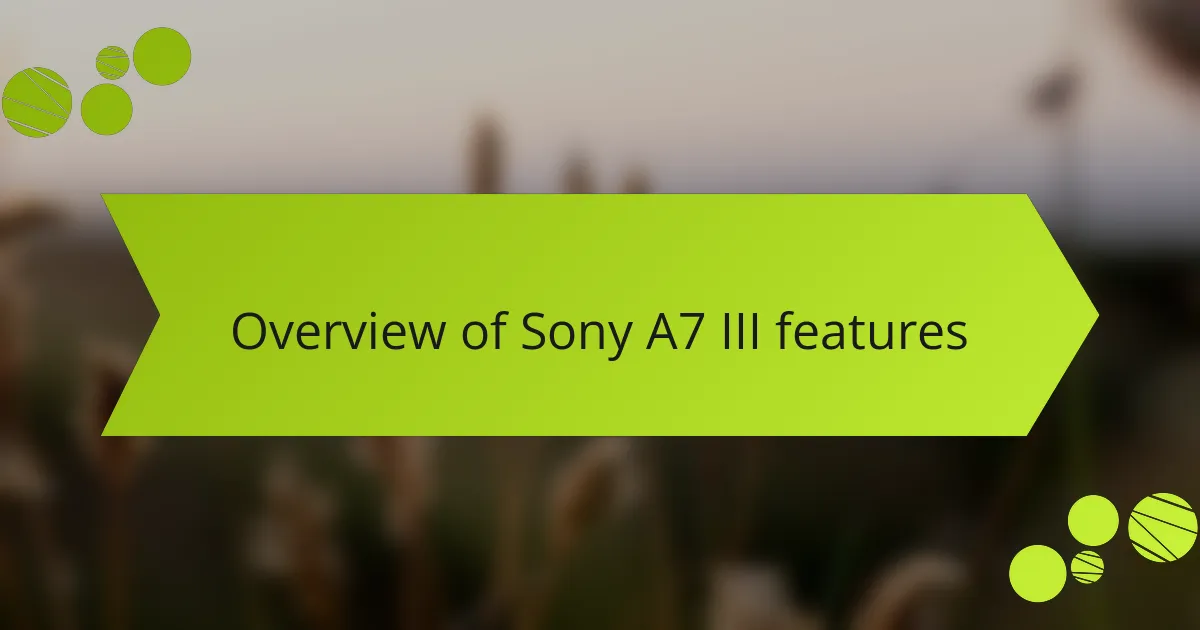
Overview of Sony A7 III features
The Sony A7 III is a powerhouse in the mirrorless camera realm, seamlessly blending technology and usability. One of the standout features for me was the impressive autofocus system; the 693 phase-detection points made capturing fast-moving subjects a breeze. I remember the first time I used it at a local sports event—each shot turned out sharp and precise, which really boosted my confidence as a photographer.
When I first explored the dynamic range, I was astonished by how well it captured details in both shadows and highlights. It made my landscape shots come to life in a way I hadn’t experienced before. The full-frame sensor truly delivers stunning image quality that surpasses my expectations.
- 24.2 MP Full-Frame Sensor: Offers exceptional image quality and low-light performance.
- 693 Phase Detection AF Points: Ensures fast and accurate focusing, even in challenging conditions.
- 10 fps Continuous Shooting: Great for capturing fast action without missing a moment.
- Dual SD Card Slots: Provides flexibility for storage and redundancy for important shoots.
- 5-Axis In-Body Image Stabilization: Reduces blurriness for sharp images, even handheld.
My journey with the A7 III has been nothing short of exhilarating. Every feature seems to empower creativity—making it a great companion for anyone looking to elevate their photography game.
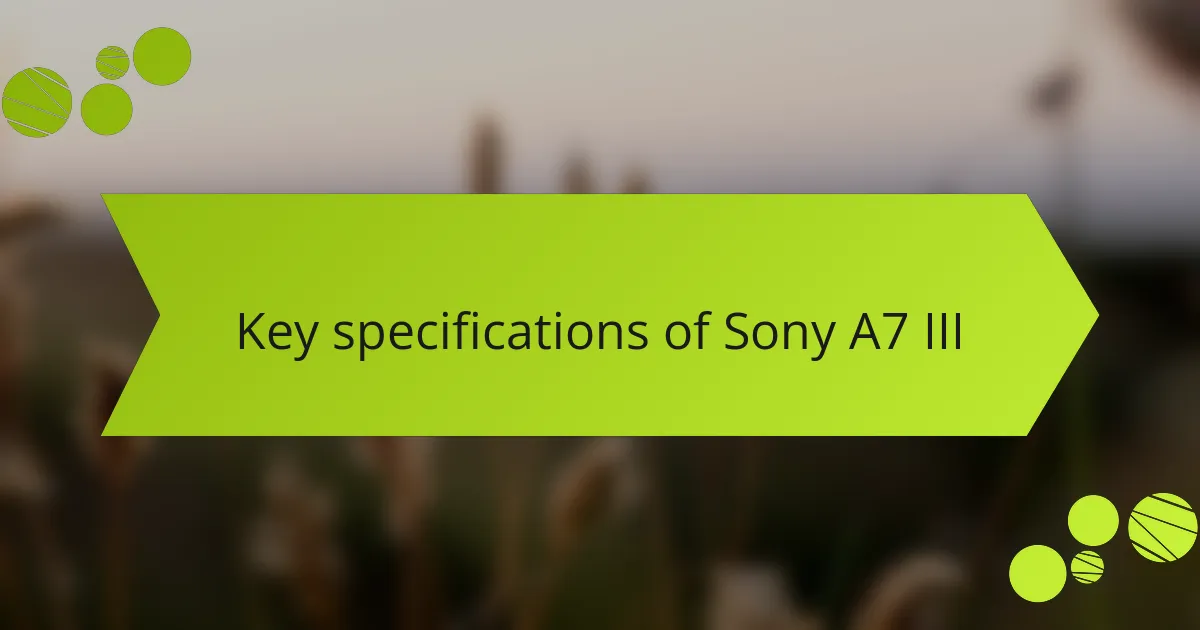
Key specifications of Sony A7 III
The Sony A7 III boasts a remarkable 24.2 MP full-frame sensor, which has consistently amazed me with its image quality. I still remember the first time I shot in low light; the clarity and detail I captured made it feel like I was getting away with something magical. Have you ever felt like you were truly seeing the world through a new lens? That’s what it felt like for me.
With 693 phase-detection autofocus points, I found the A7 III to be incredibly responsive, even in tricky lighting. I recall a chaotic event where subjects were moving fast—each frame I took was sharp and on point. It’s almost exhilarating to know that you can rely on a camera to keep up with your vision.
Having dual SD card slots was a game changer for me as it added a layer of security to my shoots. There was a time when I was capturing a wedding, and having that backup option gave me peace of mind. The 10 fps continuous shooting capability also turned capturing those fleeting moments into a joyful challenge—much like playing a fun game with the camera!

Advantages of using Sony A7 III
When I first picked up the Sony A7 III, I was immediately struck by its robust performance. It’s not just about the specs; it’s the way this camera feels in your hands, striking a perfect balance between weight and stability. I remember capturing a stunning sunset on my first outing, and the image quality blew me away—vibrant colors and sharp details that looked even better than I remembered.
The A7 III comes packed with impressive features that make it a great choice for both beginners and seasoned pros alike. Here are some of the key advantages I’ve experienced:
- Exceptional Low-Light Performance: The camera’s full-frame sensor allows for stunning results in dimly lit environments.
- Fast Autofocus: With 693 phase-detection points, the A7 III locks focus quickly, essential for capturing fast-moving subjects.
- High Dynamic Range: I appreciate the ability to recover details in highlights and shadows, making post-processing much easier.
- Dual Card Slots: This feature offers added peace of mind on shoots, allowing for overflow or backup recording.
- Battery Life: I was surprised by how long the battery lasted; it kept up with my extensive shooting sessions without a hitch.
Each of these factors has made my experience with the A7 III not just enjoyable, but truly rewarding in my journey as a photographer.

Disadvantages of Sony A7 III
When it comes to the Sony A7 III, there are a few disadvantages that I’ve encountered in my journey. One of the biggest drawbacks for me has been the battery life. While the camera does offer decent performance, I often found myself needing to carry extra batteries, especially during long shooting sessions. This became a bit tedious, as I like to travel light and not worry about swapping out batteries constantly.
Another issue I’ve faced is the menu system. When I first started using the A7 III, it felt overwhelming to navigate through the various options. I remember spending a significant amount of time trying to customize settings, which can be frustrating when you want to capture the moment quickly. The menu might not be a dealbreaker for everyone, but for someone who values efficiency, it can be a hurdle.
Lastly, the weight of the camera can be a downside for some users. While it’s not excessively heavy, I found that after a full day of shooting, my wrists felt a bit sore. If you plan on doing a lot of handheld work, this is something to consider, especially compared to lighter models on the market.
| Disadvantages | Details |
|---|---|
| Battery Life | Requires extra batteries for long shoots |
| Menu System | Complex and can be time-consuming to navigate |
| Weight | Can feel heavy during extended use |
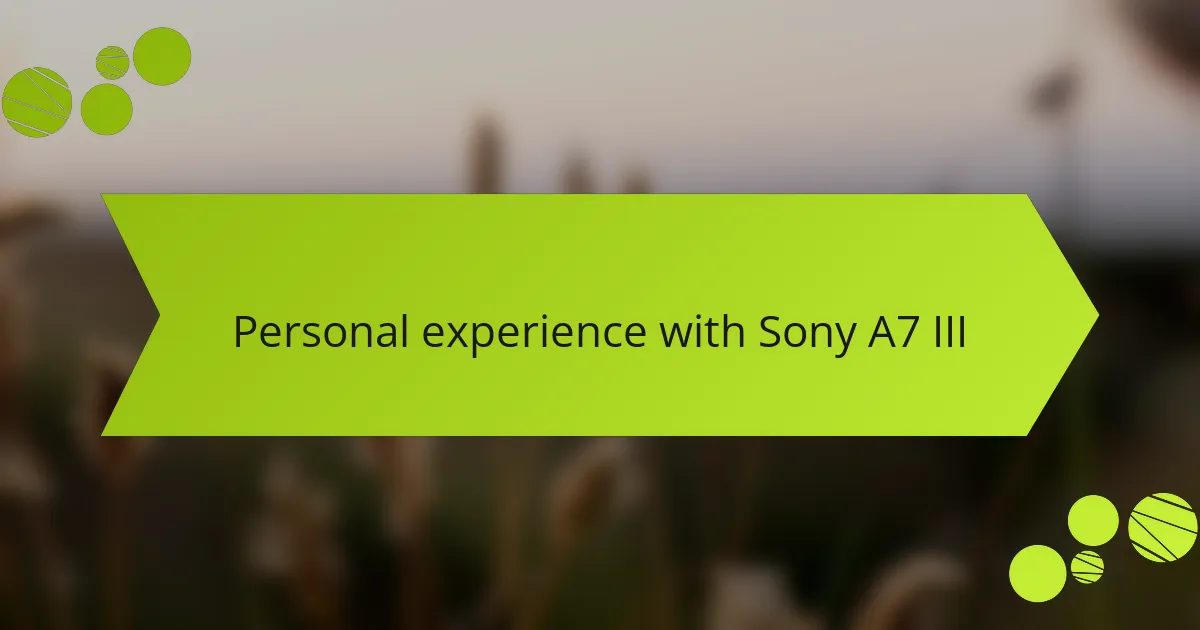
Personal experience with Sony A7 III
The Sony A7 III has truly transformed my photography journey. When I first held it, I was impressed by its ergonomic design and light weight, making it perfect for long shoots. Capturing stunning images in low light conditions has become second nature with its impressive autofocus system and dynamic range.
During a recent trip to the mountains, I put the A7 III to the test. The colors were breathtaking, and the clarity in my landscape shots took my breath away. It felt rewarding to see how the camera captured the essence of the scenery in ways I’d struggled to achieve before.
Here’s a quick comparison of some key features of the Sony A7 III that stood out to me:
| Feature | Details |
|---|---|
| Sensor | Full-frame 24.2 MP |
| ISO Range | 100-51200 (expandable to 50-204800) |
| Autofocus Points | 693 Phase Detection, 425 Contrast Detection |
| Battery Life | Approx. 710 shots |
| Video Recording | 4K at 30p |
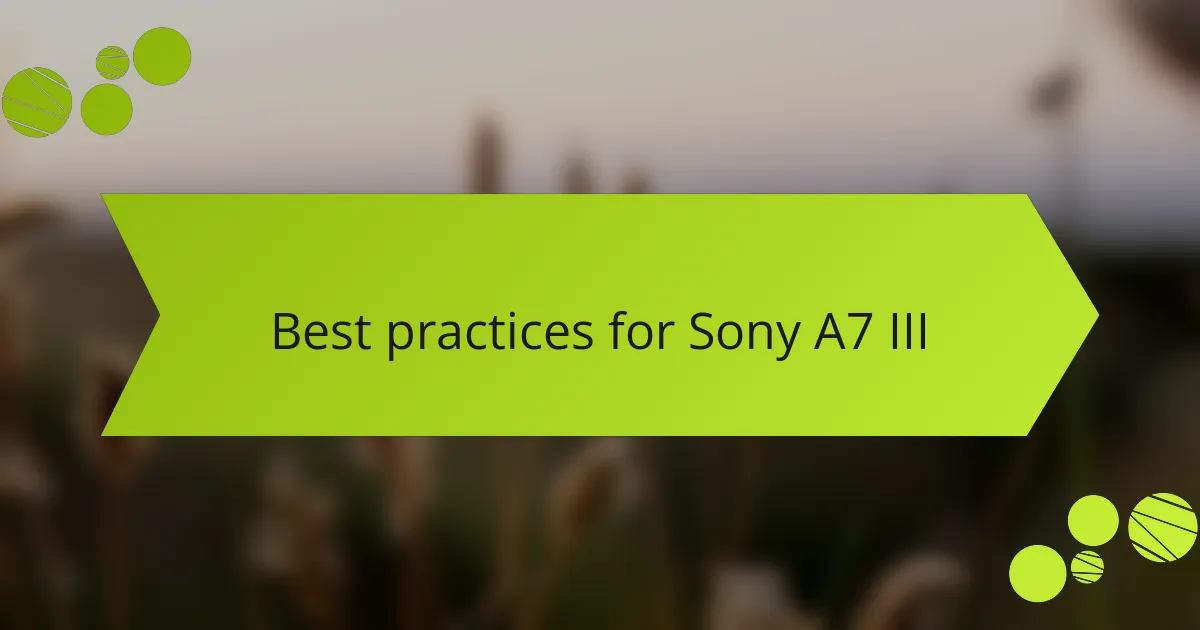
Best practices for Sony A7 III
Using the Sony A7 III has taught me a lot about maximizing its capabilities. One practice that stands out is familiarizing myself with the custom settings. I vividly remember setting up my camera for a wedding and pre-programming modes for different scenarios—like low-light portraits or fast-paced dancing. Having these presets ready allowed me to switch effortlessly during the event, ensuring I didn’t miss a moment. Have you ever been caught fumbling with settings at a critical time? It’s a game-changer to have things prepared ahead of time.
Another tip I swear by is taking full advantage of the camera’s dual SD card slots. I always use one for RAW images and the other for JPEGs. This way, I can immediately share some shots on social media while preserving the originals for editing later. I felt a surge of relief knowing I had redundancy on crucial shoots, like when I photographed my close friend’s memorable graduation. Losing those moments was never an option!
Lastly, understanding the five-axis in-body image stabilization has transformed my shooting style. When I first experimented with it, I was astonished to see how crisp my handheld shots were, even in lower light. I remember capturing a night street scene with fluidity that made the images come alive. This feature has given me the confidence to shoot without a tripod more often, making my creative process feel less restricted and far more enjoyable. Have you felt the same freedom with stabilization technology? It really opens up new avenues for exploration in photography!
